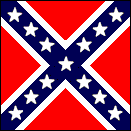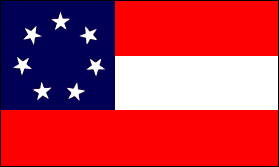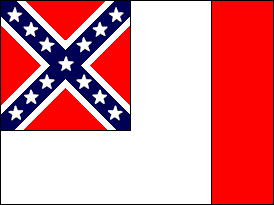| ||||||||||
Dr. Ronald P. Rogers CHIROPRACTOR Support for your body's natural healing capabilities 270-384-5554 Click here for details 


Columbia Gas Dept. GAS LEAK or GAS SMELL Contact Numbers 24 hrs/ 365 days 270-384-2006 or 9-1-1 Call before you dig Visit ColumbiaMagazine's Directory of Churches Addresses, times, phone numbers and more for churches in Adair County Find Great Stuff in ColumbiaMagazine's Classified Ads Antiques, Help Wanted, Autos, Real Estate, Legal Notices, More... 

|
Rev. Joey N. Welsh: Historic Anniversaries, Unfinished Agendas. Part II ANOTHER ANGLE: the occasional musings of a Kentucky pastor.HISTORIC ANNIVERSARIES AND UNFINISHED AGENDAS - Part II This essay first printed in The Hart County News-Herald, 18 September, 2005. This has been slightly edited - Robert H. Stone The next earlier Another Angle: HISTORIC ANNIVERSARIES AND UNFINISHED AGENDAS - Part I By The Rev. Joey N. Welsh Last week's column dealt with the unfinished agendas that are crystallized by three recent anniversaries: the September 11 attacks in 2001; the death of South African activist Steven Biko on September 12, 1977; the September 15, 1963 church bombing in Birmingham, Alabama. September 17, 2010 marked 148 years since the 1862 battle on Antietam Creek near Sharpsburg, Maryland. That battle anniversary serves to remind us of the continuing echoes of the Civil War, some of them symbolic and some of them all too tragically real. On that day the Confederate forces under Robert E. Lee were stopped in their advance to the north. Total casualties amounted to about 5,000 dead and 18,000 wounded. It was the bloodiest day of warfare in U. S. history. The battles ended within three years with Lee's surrender in 1865, but the conflict has continued for generations. In our own day public disputes rage on about display of the so-called Confederate battle flag. Some people display the widely distributed rectangular battle flag, claiming that it is a direct connection to Civil War battles, and they give the impression that it was the primary flag of the Confederacy. They are wrong on both counts. The flag we often see today is a later, elongated variation of the battle flag that was requested by Generals Beauregard and Johnston early in the conflict. That flag was square -- you can see examples preserved in any good museum with authentic Civil War items -- and it featured stars superimposed on the Cross of St. Andrew. Because of the cross motif, the Beauregard battle flag is sometimes referred to as the Southern Cross.
The first official governmental flag of the Confederate States of America, called the "Stars and Bars," had an arrangement of white stars against a blue field in the upper left corner, with the rest of the flag covered with one wide white and two wide red stripes. This flag was sometimes confused at a distance with Old Glory; it later was replaced by two versions that incorporated the square battle flag in the upper left. (The first revision left the remainder of the flag white, but it sometimes was misconstrued as a surrender flag, so the final version featured a wide vertical red stripe to the right. It was introduced just in time for Lee's surrender.) Apparently near the end of the war there were a few rectangular battle flags sewn, but they were rarely seen or used. (A rectangular version did fly from ships in the Confederate Navy, and a similar design was used briefly by the Army of Tennessee.) The rectangular version of the Beauregard battle flag did not become widely dispersed until the 1890's, when flag manufacturers began producing it in dimensions that matched the American flag. This development was protested by Confederate veterans, who evidently knew a bogus flag when they saw it. Hence, the rectangular flag that is flown today as a supposed exercise in heritage and history was so rare during the war that it was hardly ever used by Confederate forces in battle, seldom flew over any Confederate military encampments, and never flew over rebel governmental buildings (except in Hollywood movies). People who presume to honor history by flying the rectangular version of the Beauregard battle flag need to spend some time reading more history, assuming, of course, that they read. History and reality have not kept the bootleg battle flag from wide use on bumper stickers and license plates. (The authentic square battle flag was made a part of Mississippi's state flag in 1894.) The rectangular version has flown at many University of Mississippi athletic events over the years, but that tradition only began in 1948, after southern Dixiecrats left the Truman campaign and nominated Strom Thurmond for president. Rather than an exercise in history at an institute of higher learning, the flag was used as a symbol of racial defiance in a year when mainstream Democrats had endorsed civil rights at their summer convention. South Carolina flew the rectangular flag over its state capitol for many years, but that practice only began in 1962, when state legislators were angered by court rulings on the desegregation of public facilities. In Georgia the Beauregard battle flag was made a part of the state flag in 1956; a prime sponsor of the legislation, Denmark Groover, later admitted that the bill was a protest against the Supreme Court desegregation ruling in Brown v. Topeka Board of Education. In our own day this flag shows up in the literature and websites of about 500 extremist hate organizations. It is a favorite staple at Ku Klux Klan events. It is often used as a threatening affront to African-American citizens, though flaunting this flag in front of the descendants of people who endured the terror of slavery is akin to flying a Nazi swastika in front of people whose ancestors endured the Holocaust. In the popular mind, this flag will ever be associated with the forces who sought to divide the union and perpetuate the horrors of slavery. Using this flag is a protected form of free speech, but not everything that is merely legal is also an exercise in mutual respect, kindness and sensitivity, good manners, civility or ethics. In recent years the state of Georgia underwent a lot of legislative turmoil in the wrangling over the adoption of a new state flag (one without the battle flag). As the controversy raged in 2001, an interviewer caught up with Denmark Groover, the legislator who had managed the flag bill to passage in 1956. His remarks, shortly before his death, are illuminating. Groover supported a new flag, saying, "I've learned in all my years -- and it took a while to learn it -- that I have to live with all my neighbors. It's time to end this cauldron of discord that adversely affects our lives and the future of our children and grandchildren." Bless his little heart. Denmark Groover had matured into an adult who realized the harm in flaunting things that hurt others. He clearly had decided to bring this unfinished agenda item to a close. When will we grow up and do the same? This story was posted on 2010-09-19 10:34:23
Printable: this page is now automatically formatted for printing.
Have comments or corrections for this story? Use our contact form and let us know.
More articles from topic News:
The Homecoming Reunion: Metcalfe Co. High School Remembering Rev. W. Arvil Allen: He was pastor at Christies Chapel A Kindred Spirit: How To Cure A Bad Mood More on light, noise pollution Laura Nicole Rodgers crowned Miss Cow Days Red Cross Blood Drive Thurs, Sept. 23, 2010 Gov. Beshears steps up efforts to stop nursing home neglect, abuse Lake Church, Part II: Relationship of Founder, current pastor longstanding (ADV) Kare-ezzz offers in home hair care services Wants news on Downtown days View even more articles in topic News |


|
||||||||
|
| ||||||||||
|
Quick Links to Popular Features
Looking for a story or picture? Try our Photo Archive or our Stories Archive for all the information that's appeared on ColumbiaMagazine.com. | ||||||||||
|
Contact us: Columbia Magazine and columbiamagazine.com are published by Linda Waggener and Pen Waggener, PO Box 906, Columbia, KY 42728. Please use our contact page, or send questions about technical issues with this site to webmaster@columbiamagazine.com. All logos and trademarks used on this site are property of their respective owners. All comments remain the property and responsibility of their posters, all articles and photos remain the property of their creators, and all the rest is copyright 1995-Present by Columbia Magazine. Privacy policy: use of this site requires no sharing of information. Voluntarily shared information may be published and made available to the public on this site and/or stored electronically. Anonymous submissions will be subject to additional verification. Cookies are not required to use our site. However, if you have cookies enabled in your web browser, some of our advertisers may use cookies for interest-based advertising across multiple domains. For more information about third-party advertising, visit the NAI web privacy site.
| ||||||||||























































